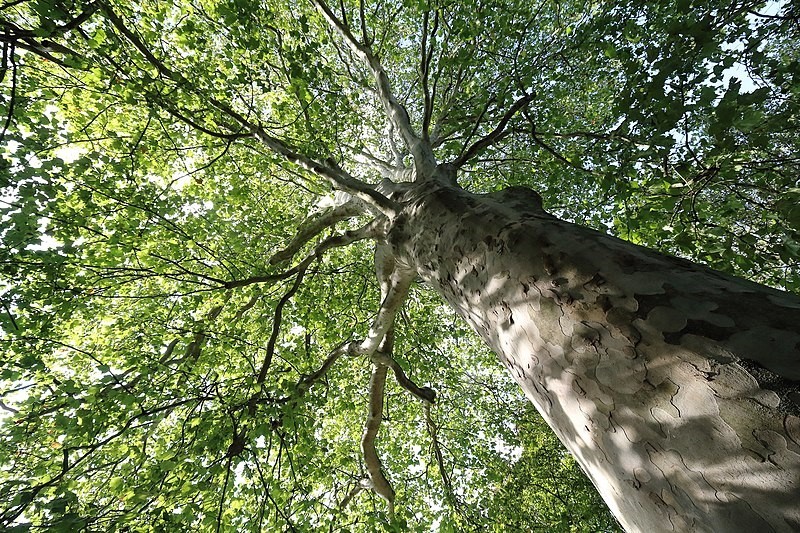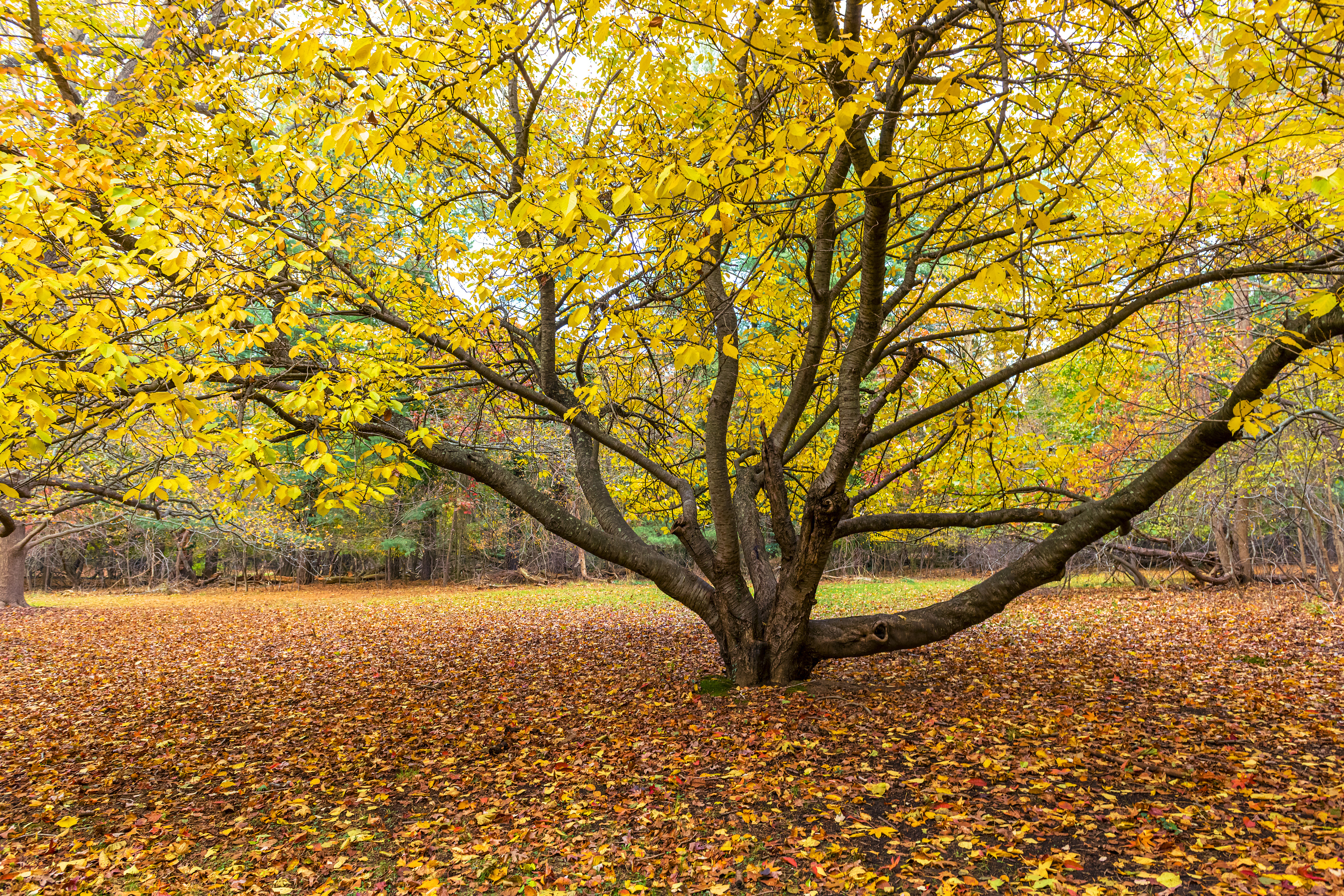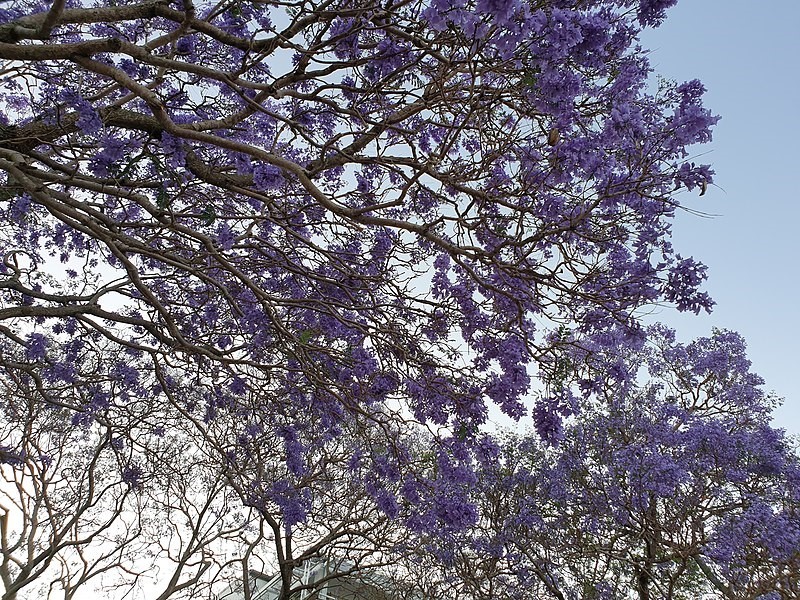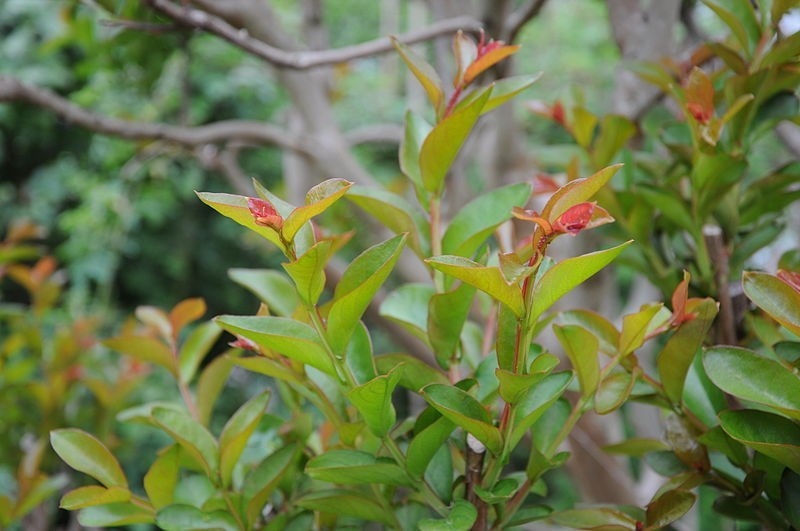Adelaide has about 3,000 species of native and exotic trees around the city and suburbs. Here’s 10 of the most common ones that you’ll likely spot.

Trees have so many benefits from providing food and shelter for animals to shading and cooling for people, plus they look good!
A question we, at Green Adelaide, get a lot is: what are the common trees around our capital city?
Well, though not all native, here's 10 trees you'll likely spot around metropolitan Adelaide:

1. Eucalyptus trees
These towering natives, known as gum trees, are incredibly resilient and beautiful.
The term ‘eucalypt’ includes about 800 species in the 3 genera (in other words, species that have been classified together based on phylogenetic relatedness or common features) of Angophora, Corymbia and Eucalyptus. Almost all eucalypt species are native to Australia.
Gum trees are recognised for their fast growth and their smooth, flaking bark. Plus, having an iconic Australian smell.
You’ll see eucalyptus trees all over Adelaide, but especially in the eastern suburbs around the foothills.

2. Bottlebrush trees
Bottlebrush trees (Callistemon) are extremely hardy.
You will recognise them by their distinctive flowers – commonly red, but they also come in white, pink, or yellow and attract a range of birds, bees and butterflies.
The tree has a weeping tendency (drooped branches) which makes it a great screening plant.
You can see bottlebrush trees in the western suburbs, especially around Seaton.

3. Ornamental pear trees
You’ll know these exotic trees from their fiery red and bronze leaves that emerge in autumn and then striking white blossoms in spring.
Ornamental pear trees (Pyrus calleryana) have narrow growth of between 2 to 3 metres from slender trunks. Their straight and tight growth provides a perfect privacy screen and is why they are often planted in rows lining properties.
These trees are often seen along streets, parks or the exterior of gardens. You’ll spot them on Leigh Street and other streets around Adelaide's CBD.

4. Raywood ash trees
Raywood ash trees (Fraxinus Raywood) are also known as the claret ash. They are fast growing trees.
They can reach more than 40 feet tall, or around 12 metres, and have a rounded canopy.
They are a perfect tree to create light shade in the summer sun. During autumn their usually glossy green leaves turn burgundy before falling for the winter.
You can spot Raywood ash trees in the south-eastern suburbs, particularly around Mitcham and ANZAC Highway.

5. Golden elm trees
Elm trees (Ulmus glabra ‘Lutescens’) are some of the most important trees in the world.
Populations in Europe and North America were decimated by the Dutch elm disease from 1910, but elm trees in Australia and Adelaide are going well.
You can enjoy elms around Adelaide that date back over a century!
You’ll spot big golden elms in the Adelaide Park Lands and along historical streets and will recognise their signature yellowing of leaves during autumn.

6. Jacaranda tree
These famous street trees are renowned for their distinct purple flowers, carpeting streets and putting on a bright display during spring.
They originate from south-central South America, and are a hardy tree. Jacarandas (Jacaranda mimosifolia) are popular with councils and large family gardens because of their minimal maintenance once established.
These purple beauties are all around Adelaide, but you can be sure to find them on L’Estrange Street in Glenside, Trevelyan Street in Unley, Chamberlain Avenue in Clarence Gardens, Byron Road in Black Forest, and Main Avenue in Frewville.

7. White cedar
White cedars (Melia azedarach) are extremely drought tolerant.
They are native to Australia and winter deciduous (meaning they lose their leaves in cooler months).
Australia has lots of trees that are evergreen (retain their leaves throughout the year), and even a variety of summer deciduous trees which lose leaves when water is scare in warmer months, but few trees are native and winter deciduous.

8. Crepe myrtle
Crepe myrtle trees (Lagerstroemia indica) provide year-round colour.
They showcase red and orange colourful leaves in autum, then shred their brown and grey bark to reveal pinks and reds in their trunks during winter before then flowering in white, pink, purple or red during spring and summer.
After the flowers fall, small round seed balls form. These can be cut off to stimulate new flower growth.

9. Grevillea trees
These skyline trees are also known as silky oaks because of the texture of their freshly split oak.
Grevillea trees (Grevillea robusta) are fast growing, and can live up to 65 years.
Their bright flowers resemble small hair brushes and attract birds and butterflies. While they commonly bloom between winter and early spring, they can flower sporadically throughout the year.

10. London planes
Named because of their popularity in the British capital of London, the London plane (Platanus x acerifolia) is commonly found around metropolitan Australia.
The London plane tree produces small fuzzy rounded balls, called a fruit or seed pod, which ripens from green to brown before breaking up and falling for seed dispersion.
Help protect Adelaide's trees
Metropolitan Adelaide has almost 17% tree canopy cover, but this isn’t evenly distributed across our suburbs.
Saving and increasing greenery relies on not just a love for trees and green spaces, but also legislation, policy, capacity-building and coordination to protect and enhance it. That is what the new Urban Greening Strategy aims to do. Find out more on the Urban Greening Strategy project webpage.

This story was originally published on 15 May 2022 and has been updated.